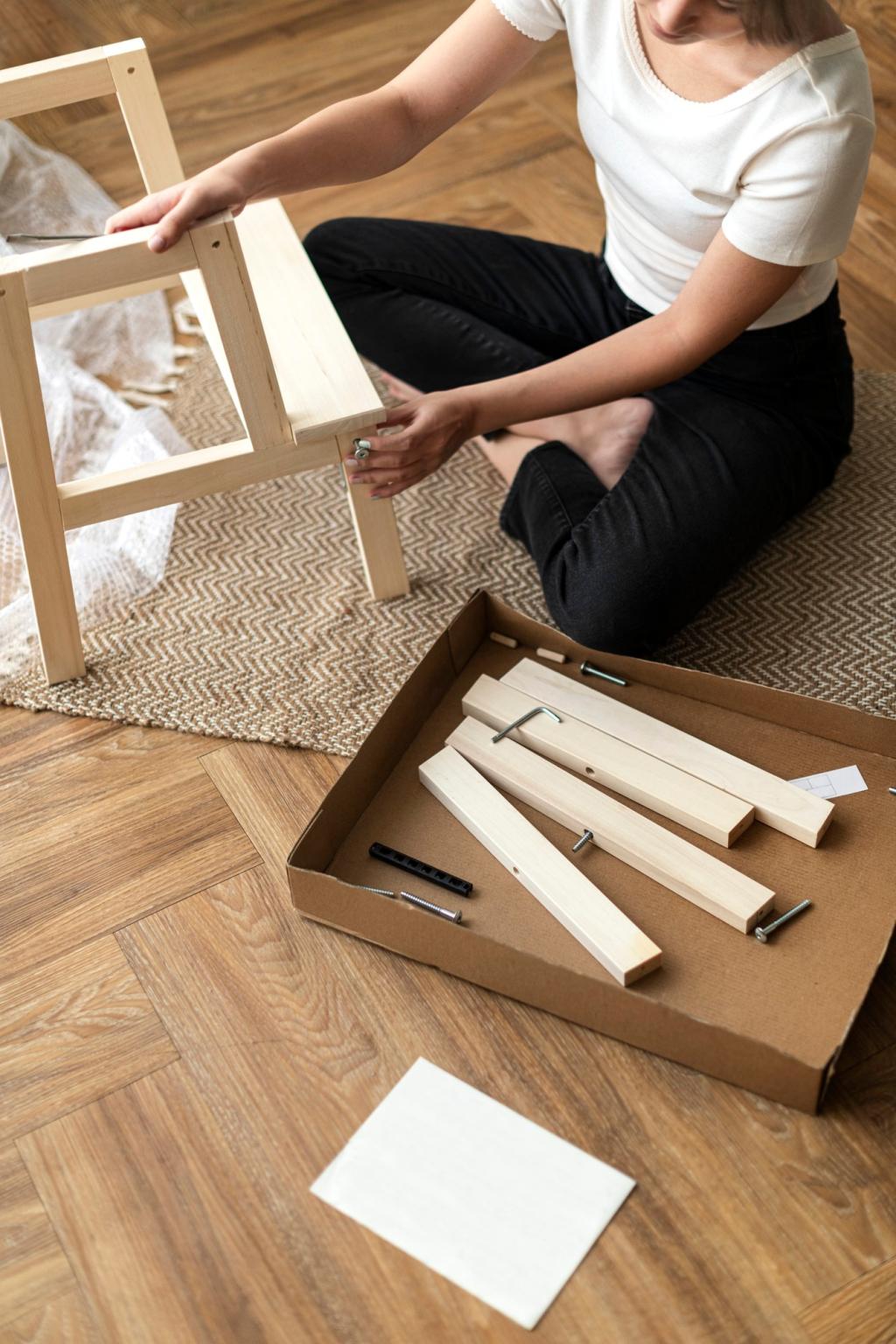Recycled Components in Modern Furniture: Crafting Tomorrow from Yesterday
Chosen theme: Recycled Components in Modern Furniture. Step into a world where discarded materials earn a second life as timeless design. Explore stories, practical guides, and bold ideas that prove sustainability and style can coexist beautifully in every room. Subscribe and add your voice.
Why Recycled Components Matter Now
Every year, millions of tons of furniture and materials head to landfills. When designers reclaim metals, plastics, and woods, they rewrite that story, turning potential waste into pieces that carry history, character, and purpose into your daily life.
Why Recycled Components Matter Now
Recycling conserves energy by avoiding energy-intensive extraction and processing of virgin materials. Choosing furniture made with recycled components lowers embodied carbon, helping you make meaningful climate-conscious decisions without compromising on quality, durability, or beauty.

Materials Spotlight: Metals, Plastics, and Woods Reborn
Recycled Aluminum and Steel
These metals retain strength through repeated recycling, making them ideal for frames and legs. They resist corrosion, carry clean modern lines, and often weigh less than expected. Ask brands for post-consumer content percentages and share your finds with our community.
Recycled and Ocean-Bound Plastics
From bottle caps to fishing nets, plastics can be transformed into durable shells, backs, and woven seats. Textures range from matte pebble to glossy sheen. Seek documented sourcing and feel the surface: quality recycled plastics should feel solid, not brittle or flimsy.
Reclaimed and Engineered Woods
Old beams, gym floors, and factory pallets can become tables rich with patina. Engineered boards with recycled wood fibers reduce demand for virgin timber. Look for non-toxic adhesives and finishes, and share photos of grain patterns that tell unforgettable stories.
Design Processes That Elevate Reuse
Modular designs optimize sheet cuts and offcuts, reducing scrap. Panels and components slot together precisely, enabling repair and upgrades over time. If you love modular systems, comment with the setups that best fit your room and lifestyle.
Design Processes That Elevate Reuse
Screws, clips, and reversible joints replace permanent glues, so parts can be swapped, recycled, or refurbished later. This keeps components in circulation longer. Ask makers how easily their pieces come apart, and share your disassembly experiences with readers.
Design Processes That Elevate Reuse
Low-VOC oils, powder coats, and water-based lacquers preserve textures while protecting surfaces. Instead of hiding imperfections, thoughtful finishes celebrate history—scratches, grain, or casting marks—turning character into a signature. Tell us which finish feels best in your home.
Real Homes, Real Stories
An artist rescued a dented aluminum street sign and paired it with reclaimed oak. The result: a coffee table that sparks conversations about place and memory. Share the reclaimed materials you have transformed or hope to discover in your neighborhood.

Care, Repair, and Longevity
Dust metal frames with a soft cloth, refresh wood with natural oil, and avoid harsh chemicals on recycled plastics. Gentle, regular care prevents expensive fixes later. Share your maintenance routines and homemade polish recipes with fellow readers.
Care, Repair, and Longevity
Loose joints, scratched tops, or scuffed powder coat rarely require a full replacement. Many makers sell spare parts and offer repair guides. Ask for component catalogs, and let us know which brands support you with accessible spares and tutorials.
How to Choose Authentic Recycled Furniture
Look for clear statements about post-consumer content, sourcing, and production methods. Certifications help, but honest material breakdowns and traceable suppliers matter most. Ask questions publicly; your curiosity encourages better standards across the industry.
Join the Movement: Community, DIY, and Sharing
Start small: a stool from reclaimed planks, a side table with a recycled metal base. Document your process, mistakes, and wins. Tag us and subscribe for tutorials—your creativity can spark someone else’s first sustainable project.
Join the Movement: Community, DIY, and Sharing
Architectural salvage yards, maker spaces, and community swaps overflow with potential. Build relationships with recyclers and fabricators who understand materials. Share your favorite local sources so readers nearby can discover hidden gems too.
Join the Movement: Community, DIY, and Sharing
Comment on posts, vote in polls, and email makers about the pieces you want to see. When a community asks for recycled components, designers listen. Subscribe to stay involved and help steer the next generation of responsible furniture.
